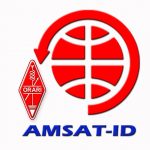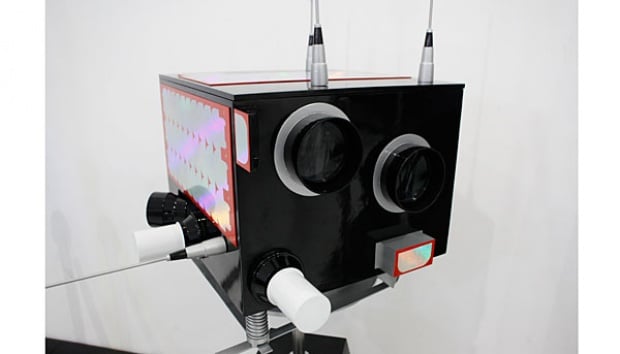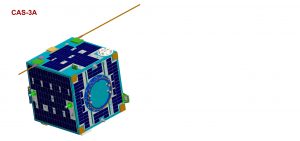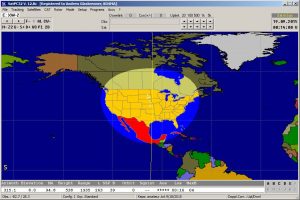From AMSAT News Service:
UKube-1, the UK Space Agency’s first national spacecraft, has now completed
its nominal mission following over 14 months of operations. Discussion is
underway with AMSAT-UK about the possibility of taking over UKube-1 operations
to continue its educational and outreach activities.
Launched in July 2014, UKube-1 is a technology demonstration mission with a
broad set of objectives aimed at attracting and training future generations of
engineers, encouraging collaboration across sectors and institutions, fast
tracking space technology development and engaging with students.
As a 3 unit CubeSat (30x30x10cm), flying 4 main payloads, with all the key
subsystems of much larger satellites, UKube-1 remains one of the most advanced
CubeSats ever built. Despite some technical challenges in orbit, the mission
has achieved a range of milestones including:
• delivery into the correct planned orbit (around 650km, sun-synchronous)
• successful deployment of solar panels and antenna
• good battery health
• slow spin rate measured
• uplink and downlink capabilities checked, including Large Data Transfer,
downlink at 3 speeds, and redundant communications mode
• all core payloads commissioned and data collected for each
• on-board camera technology successfully tested
• data downlinked from multiple ground stations across the globe
UKube-1 has also helped maintain the UK’s leading position in the CubeSat
sector. Participation in the mission placed Clyde Space in an excellent
position to capitalize on the fast growing global nanosatellite market. The
company has experienced 100% year on year growth, both in turnover and
employees, as a direct result from involvement in UKube-1, and is firmly
established as a global leader.
Mark McCrum, Bright Ascension Ltd, said:
“UKube-1 provided us with an invaluable opportunity to gain flight heritage
for our software technology and to get deeply involved in the operation of a
complex CubeSat mission. It gave a huge boost to our credibility as a space
software provider and has been instrumental in winning further work.”
Craig Clark, CEO Clyde Space Ltd, said:
“UKube-1 represents a pivotal achievement in the development and growth of
Clyde Space. The project moved the company from being a spacecraft subsystems
supplier to providing full missions for our customers. To give some context to
the extent that Ukube-1 has had to our business, Clyde Space has more than
quadrupled in size in the last 3 years and there are currently over 60 CubeSats
planned through production here in Glasgow over the next 18 months. The return
on investment for Ukube-1 in terms of jobs and export sales for the UK has been
outstanding and is a great example of industry and the UK Space Agency working
together to put the UK at the forefront of global space technology.”
Professor Andrew Holland, Open University, added:
“Involvement in the UKube-1 mission, though our C3D instrument, has had a
positive effect on our research and technology program within the Space
Instrumentation Group at the Open University, as well as a positive effect on
our technology partners in the project; XCAM Ltd and e2v Ltd. The project has
helped the OU to build a new strand of instrument development within the group,
raised awareness of the CubeSat platform as a potential vehicle to accelerate
the development of scientific space instrumentation, and has provided early in-
orbit-demonstration of technologies. The mission introduced us to new academic
and industrial collaborators operating in the space sector and supported the
career development of the young engineers and scientists working on the
project.”
STFC’s RAL Space provided the Ground Station for the mission at Chilbolton
Observatory in Hampshire UK, and UKube-1 operations were commanded from there.
Mission Manager Dr Helen Walker said:
“It has been a very exciting time, made possible only with the great support
from all the teams involved.”
Although the Agency-supported mission phase has ended, discussion is underway
with AMSAT-UK about the possibility of taking over UKube-1 operations to
continue its educational and outreach activities until the satellite orbit
naturally degrades.
More information about UKube-1 can be found in the missions section of the UK
Space Agency website
https://www.gov.uk/government/case-studies/ukube-1
Source
https://www.gov.uk/government/news/ukube-1-completes-mission
UKube-1 carries a set of AMSAT-UK FUNcube boards which provide an educational
beacon for use by schools and a linear transponder for amateur radio
communications.
UKube-1 nominal frequencies:
• 145.840 MHz Telemetry downlink
• 145.915 MHz FUNcube subsystem beacon
• 400 mW inverting SSB/CW linear transponder
– 435.080-435.060 MHz Uplink
– 145.930-145.950 MHz Downlink
[ANS thanks AMSAT-UK for the above information]





